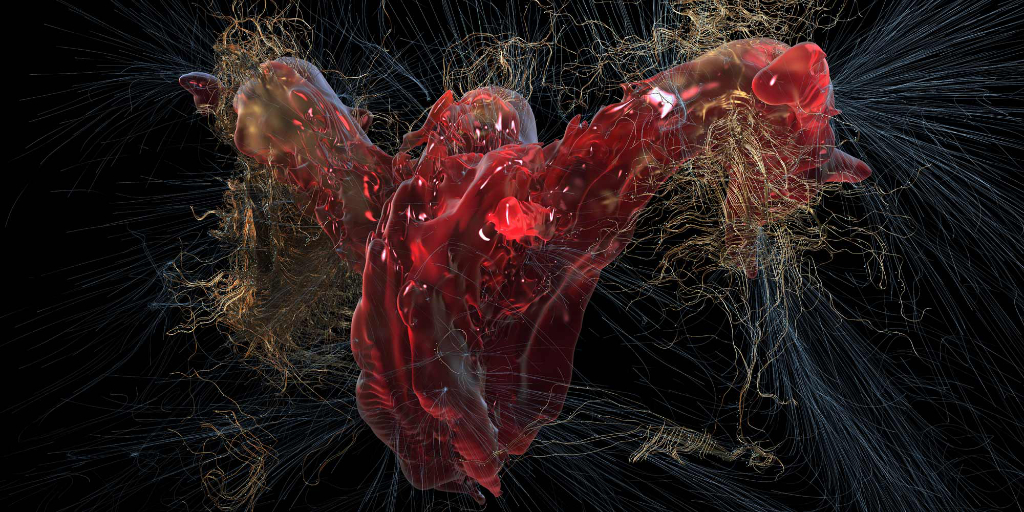Text by CLOT Magazine

Media artist Eli Joteva laid down in an MRI scanner for hours to obtain the material for her digital artwork IntraBeing. It shows oversized organs and highly complex webs of nerves that move meditatively and mysteriously right before the viewer’s eyes. Developed during her residency at Fraunhofer MEVIS, Eli Joteva has been tackling science-related themes for some time: she incorporates quantum mechanics and neurophysics influences into her work. She uses sophisticated imaging techniques such as infrared cameras and laser scanners to create her digital installations.
I’m very inspired by the invisible mysteries, such as how forces and vibrations outside our perception affect us. That’s why I try to use imaging techniques to look into spaces we can’t perceive with our senses. She said. For her artwork development, Eli Joteva was taken with an MRI method called DTI which can be used to map the shape and behaviour of nerve fibres. Typically, this method is used for brain images. However, Eli Joteva had the idea of using it for other parts of the body, especially the chest, pelvis, and feet.
I have always been interested in the complex ecosystems inside the human organism and have often used my own body in my work, Joteva says. That’s why I was excited to take MRI data of my body and work with it. This is the third artist residency, which Fraunhofer MEVIS is organising together with Ars Electronica in Linz and the International Fraunhofer Talent School Bremen, and is once again being held in cooperation with the Walle School Centre in Bremen. The work can be seen from 8-12 September 2021 at the Ars Electronica Festival in Linz and via the intrabeing.joteva.com.






